I’ve loved pierogies as long as I can remember. I used to buy them in huge bags from the frozen aisle of the supermarket. There weren’t many in the bag, but I do recall being stuffed after I ate some of them. They’re like huge raviolis that are filled with all sorts of great ingredients. Traditionally though, they include mashed potatoes and sauerkraut. Now that I have the perfect recipe, I can put almost anything I want in them. I’ll called them “American” pierogies.
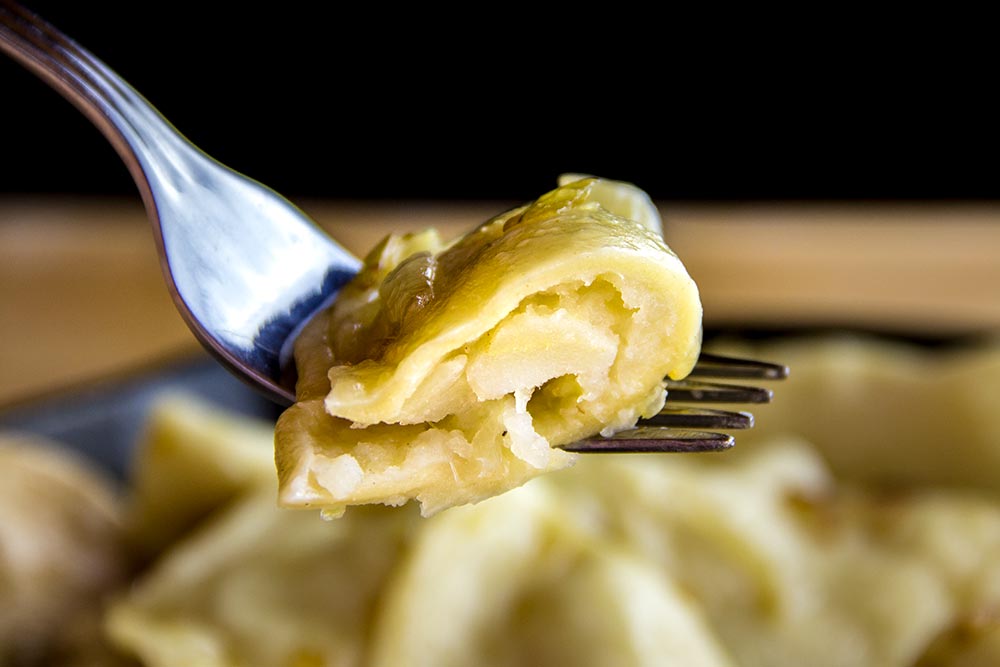
The Recipe
For this recipe, I stuck with tradition. We had the choice of mashed potatoes and cheese or mashed potatoes with sauerkraut. Since Laura is a lover of all thing sauerkraut, I thought that might be the way to go. I enjoy both ingredients, so I would have been happy with either one. We went with the sauerkraut.
I followed this recipe from Cook’s Country. Instead of using a mix of all-purpose and semolina flours, they decided to go with a bread flour, due to the scarcity of semolina flour here in the states. The bread flour offered some good tenderness and texture, so I’m fine with that.
These pierogies have the perfect filling. If I wasn’t very decided on sauerkraut before, I am now. I like the bit of a twang this ingredient offers as well as the opposition of texture from the other ingredient – mashed potatoes. It’s a nice balance.
This recipe may seem long and time consuming, but really, it’s only a few primary steps. First, prepare the filling. Next, prepare the dough. After that, create the actual pierogies and finally, cook them up. If you turn on some music and take your time, you’ll be eating some mighty tasty pierogies in just a short while.
Ingredients
Makes: Approximately 30 Pierogies
For the Filling
1 Pound Russet Potatoes
Regular Table Salt
Ground Black Pepper
14.4 Ounce Can of Sauerkraut
2 Tablespoons Regular Olive Oil
For the Dough
2 1/2 Cups Bread Flour
1 Teaspoon Baking Powder
Regular Table Salt
1 Cup Sour Cream
1 Large Egg + 1 Large Yolk
For the Topping
4 Tablespoons Regular Olive Oil
1 Large onion
1/2 Teaspoon Regular Table Salt
Step-by-Step Instructions
It’s very simple to substitute for this recipe. All you need to do is choose a different filling and make sure it’s soft after cooking. Also, you’ll need to be sure it prepares at least 30 tablespoons of material after it’s finished being made. You can use cheese, broccoli, any other type of vegetable. Perhaps sweet potatoes would be good. Don’t limit yourself to a traditional recipe when the world is full of choices.
Prepare the Filling
Peel the 1 pound of potatoes and slice them into 1/2 inch pieces. Then, add them to a large pot and fill the pot with about 6 cups of water. The water should cover the potatoes by about an inch.
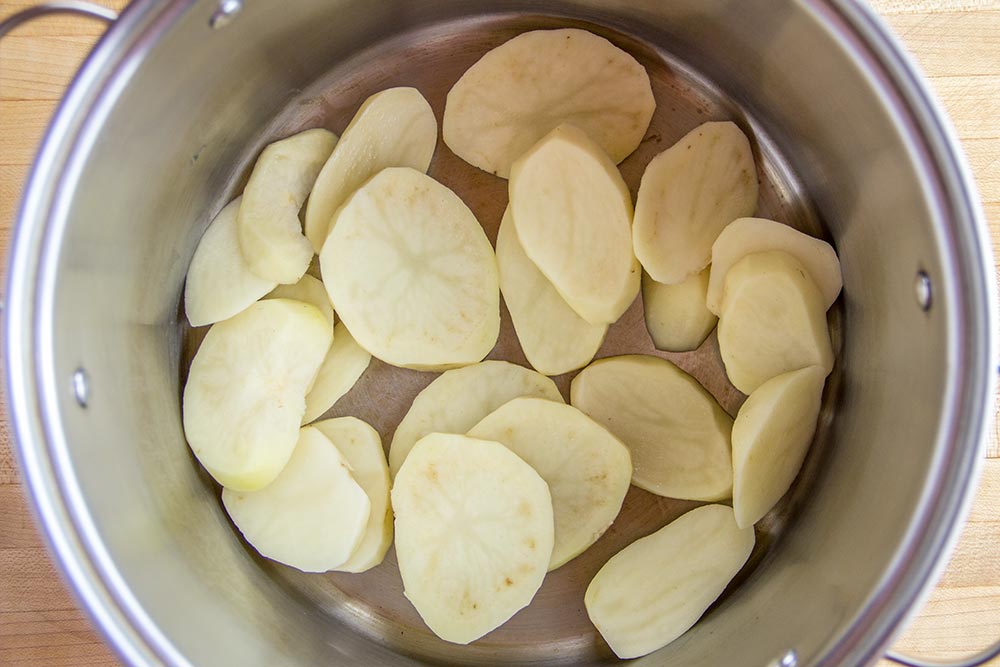
Place the pot over high heat until boiling and then reduce heat to medium-high. After that, let cook for about 13 minutes or until the potatoes are soft. When they are, dump the potatoes into a colander so they drain.
In a large stand mixer bowl, add the potatoes, the 14.4 ounce can of drained, rinsed and chopped sauerkraut, the 2 tablespoons of regular olive oil, 1/2 teaspoon of regular table salt and 1/2 teaspoon of ground black pepper.

Mix for a few minutes using the paddle attachment. When you feel that the stand mixer can add no more benefit, go ahead and use a hand masher and continue mashing the ingredients together until they are as smooth as they’re going to get. After that, scoop everything out into a bowl, cover and set aside for later use.

Prepare the Dough
Clean the stand mixer bowl out well and add the 2 1/2 cups of bread flour, the 1 teaspoon of baking powder and 1/2 teaspoon of salt. Then, mix these ingredients together well with a fork. After that, add in the 1 cup of sour cream and the 1 large egg and 1 large yolk.
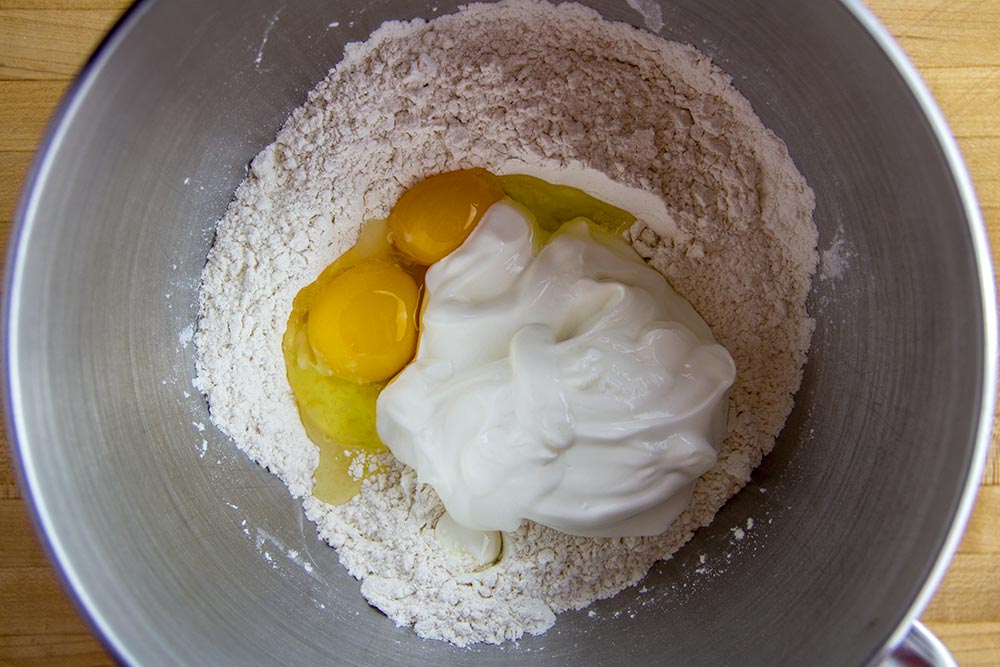
With the hook attachment, mix these ingredients for a few minutes. After a while, you’ll notice that the stand mixer doesn’t do anything to the dough but twirl it around like a ballerina. When this happens, remove the dough from the mixer bowl and place on a well floured surface. This is what mine looked like at this point.
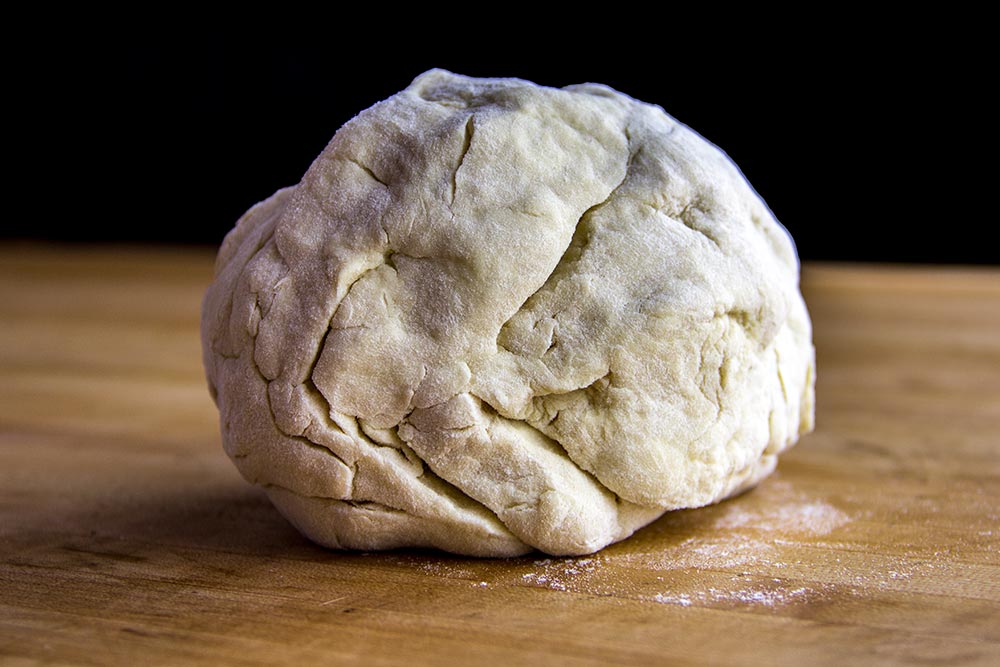
The thing is, this dough needs to be very smooth and elastic. To make the dough like this, it’ll require some kneading. During this process, I got a great idea and pulled out my pasta maker and ran 1/6th pieces of the dough through it a few times until it was super smooth. Once that was finished, I re-combined the dough and ended up with a wonderfully smooth ball. If you don’t have a pasta maker, you can certainly knead the dough by hand. I’d say to do it for a good 5 minutes or until you think it’s finished.
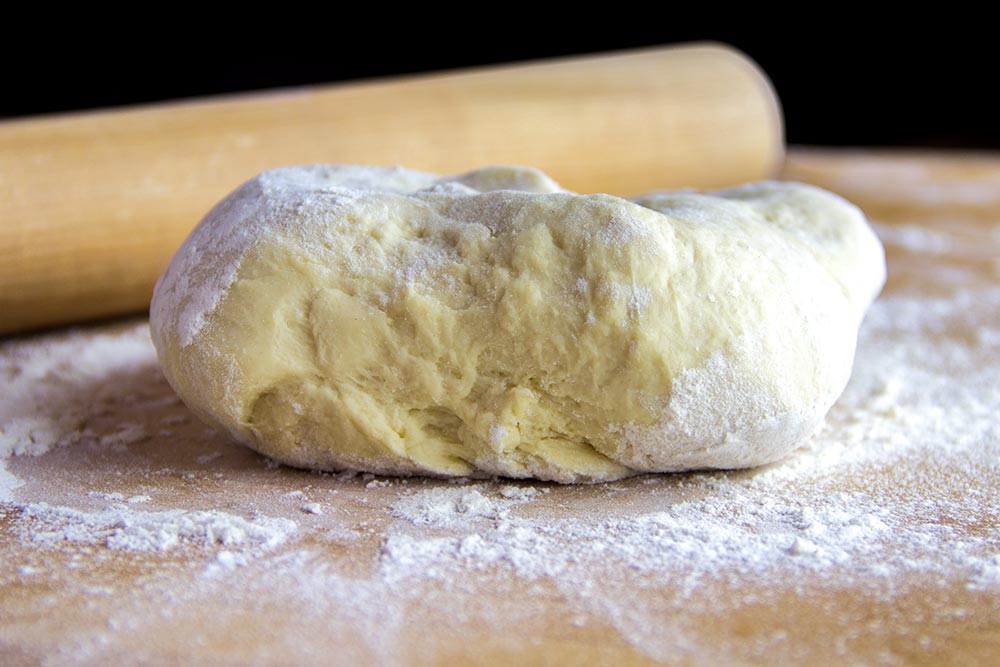
Make the Pierogies
Once you have the dough in good shape, roll it out with a rolling pin into an 18 inch circle (or sort of a circle). It should be about 1/8 of an inch thick.

With a 3 inch cookie cutter or a used tin can with an opening of about 3 inches, go ahead and press as many holes into the dough as you can. I was able to get 24 out of my first go-round.

After you have some circled pressed, you can add 1 tablespoon of filling to each circle. Be sure not to add any more than 1 tablespoon of filling or the pierogies will be difficult to fold over and close.

After the filling is in the circles, fold them over and press the edges firmly so they are sealed.
Once you have a few pierogies created, place them onto a baking sheet that has a piece of parchment paper on it.
You’ll likely have fewer than 30 pierogies and some leftover dough after your first pass. Go ahead and combine the leftover dough and roll it out again. Continue cutting holes and filling them like before until you’re finished. Since I had some extra everything, I decided to make a super pierogi for fun.
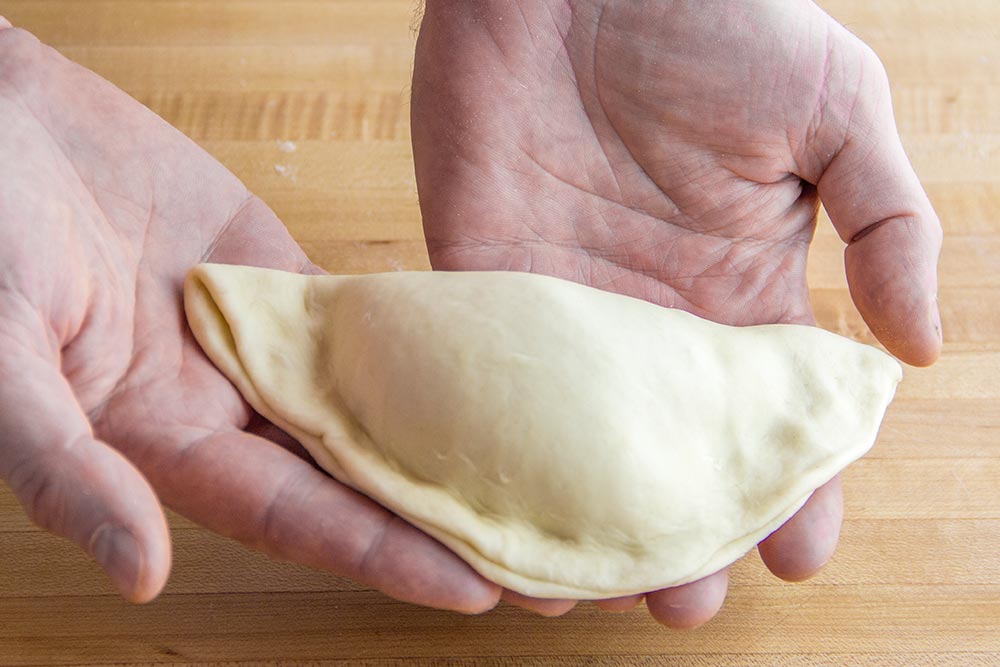
Make the Topping
In a 12 inch skillet, warm 4 tablespoons of regular olive oil over medium heat. While the skillet is warming up, go ahead and finely chop the large onion. When finished, add the pieces of onion, along with the 1/2 teaspoon of regular table salt, to the skillet and, while stirring, cook the onion for about 15 minutes or until brown. When finished, remove from heat.

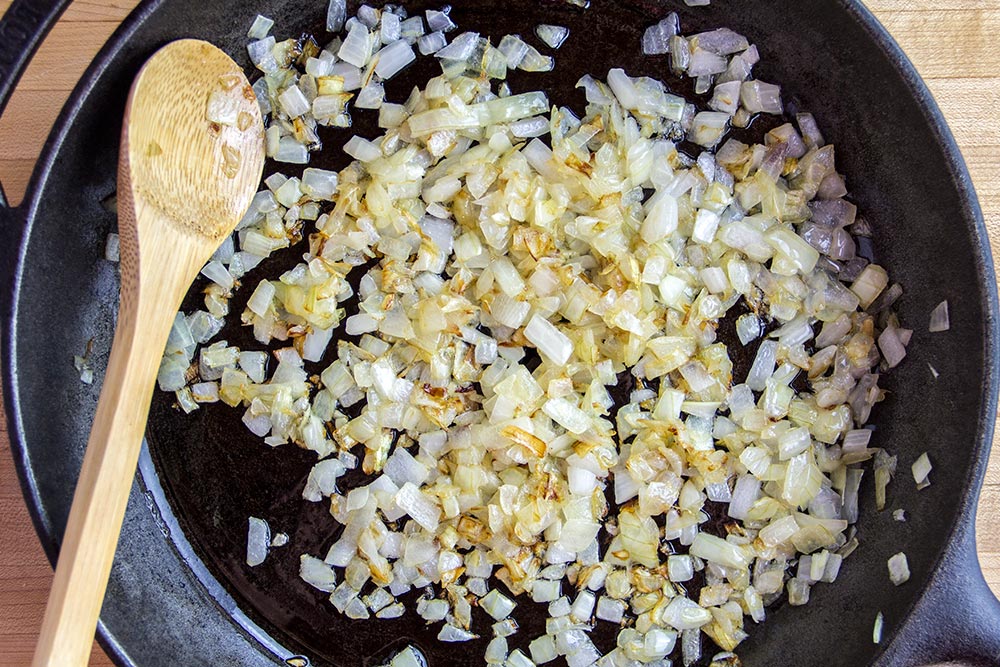
Cook the Pierogies
In a large pot, boil 4 quarts of water along with 1 tablespoon of regular table salt. When boiling, add half of the pierogies to the water and cook for 5 minutes. After that, remove the pierogies from the water with a slotted spoon and add to the skillet with the onion in it. Then, add the other half of the pierogies to the boiling water and, again, cook for 5 minutes. When finished, add those remaining pierogies to the same skillet as the others. When all pierogies are in the skillet warm it over medium-low heat and add in 2 tablespoons of the cooking water. Cook the pierogies in the skillet, while gently stirring, until everything is coated well with onion and oil.
The Final Dish
While there are a few steps to this recipe, I think the end product is worthwhile. You’ll almost certainly have leftovers, so the fun should last. I think these taste great and it was good to enjoy them once more. I haven’t had them in quite a while.

If you’ve enjoyed today’s post and found it helpful, please share it with a friend. Thanks!

Great recipe! Thanks! I like to make a big batch and freeze some after they cool down from boiling. Bacon also goes really well inside and as a topping!!
If you’d like to freeze pierogi after making, cool down after boiling, line a cookie tray with parchment and spray with oil. Line up pierogi so they aren’t touching and leave in freezer overnight. Once frozen, store in plastic bag or container. You can complete the frying part of the recipe with frozen pierogi. Also, if you’re having difficulty rolling the dough by hand, cut it into two or more pieces, then roll and fill each piece. Keep unused dough covered with plastic wrap or lightly dampened cloth until you roll it out.
This looks so delicious. I have never made pierogis at home but you make it look so simple. I haven’t had a good pierogi in a long time. Hopefully I can beat the ones I’ve had in the past! Thank you so much for sharing! Can’t wait to try this at home.
Thanks. I’ll try your dough recipe. I make Kraut with mushroom. It’s tasty too. Grandma made plum ones.